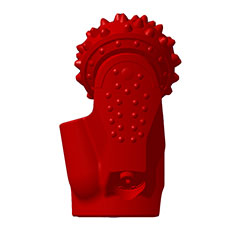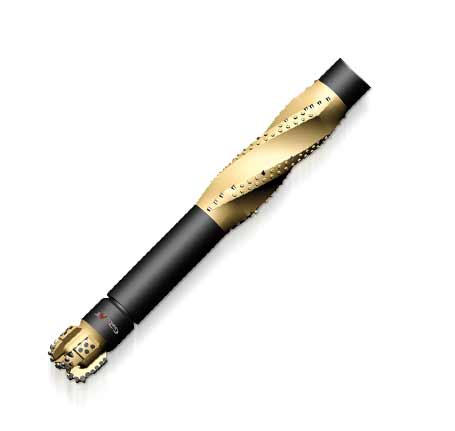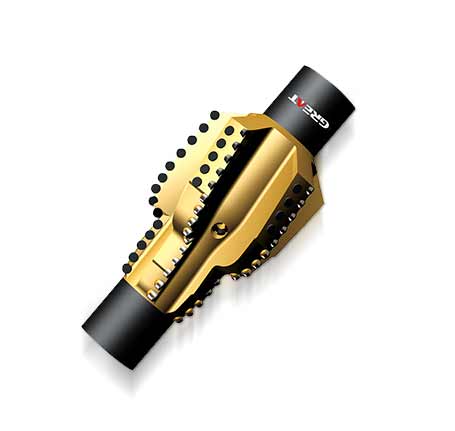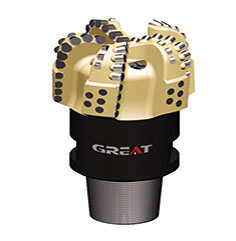Ⅰ. The impact and crushing effect of roller cone bit
During drilling, the bit and its cone rotate around the bit axis. The teeth of the cone rotate on their own axis due to rock resistance, and the teeth alternately contact the bottom of the hole.
When the cone moves from single tooth to double teeth contacting bottom, the center of roller cone bit drops from the highest to the lowest position. The center of roller cone bit rises from the lowest to the highest position as the cone reaches the bottom again from two to one teeth.
Such repeated movement, the axis of roller cone bit periodically rise and fall, so that the bit produces longitudinal vibration, and amplitude is the vertical displacement of the wheel center.
In each longitudinal vibration process, the upward movement of the shaft will compress the lower drill string to accumulate elastic energy, and the downward movement of the shaft will cause the elastic elongation of the lower drill string to release elastic energy.
Therefore, when the roller cone bit breaks rock at the bottom of the hole, the force exerted by the teeth of the roller cone bit on the rock not only has the static load caused by the bit pressure, but also has the dynamic load caused by the teeth of the roller cone bit rushing towards the rock at a high speed due to the longitudinal vibration. The former makes the teeth crush the rock, which is called the crushing effect. The latter causes the teeth to impact and break the rock, known as impact.
The impact load of roller cone bit is beneficial to rock breaking, but it will also cause premature damage of roller cone bit bearing and fracture of teeth, especially cemented carbide teeth, resulting in fatigue failure of drill string.
Therefore, shock absorbers are used in drilling, especially when drilling hard formations.
Ⅱ. The shear effect of roller cone bit
The shear effect of roller cone bit is realized by the sliding of the tooth on the rock when the cone rolls are in the bottom hole. There are three factors that produce slip: overtopping, complex cone and axle shift.
Slide caused by overtopping: The slide direction is perpendicular to the roller cone bit busbar, that is, along the tangent direction.
Slide caused by axle shift: The sliding direction is along the axial direction of the roller cone bit.
Slide caused by complex cone: The complex cone includes the main cone and the auxiliary cone. If the main cone top coincides with the center of the drill bit, the auxiliary cone top must be supertop, and the supertop causes the slip in the tangent direction.
The axial sliding caused by axle shift can shear the rock between the tooth ring, while the tangential sliding caused by overtopping and complex cone can shear the rock between the adjacent tooth fracture pits of the same tooth ring of the roller cone bit, and the sliding increases the tooth wear.
For extremely soft to medium-hard formations, the bit generally has axle shift, overtopping and complex cone. Medium and hard formations choose bits with overtos and complex cones. The selected bit of extremely hard formations is pure rolling (single cone, no over top, no axle shift).
 English
English français
français Deutsch
Deutsch Español
Español italiano
italiano русский
русский português
português العربية
العربية tiếng việt
tiếng việt ไทย
ไทย Nederland
Nederland




